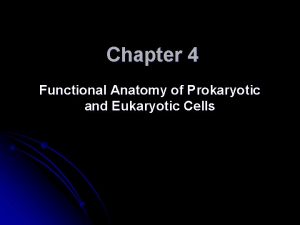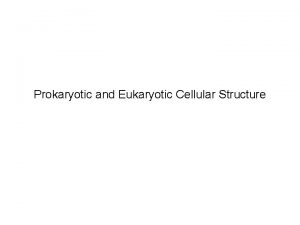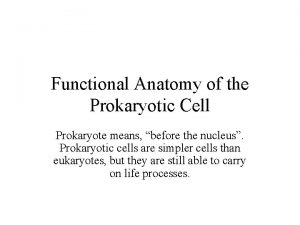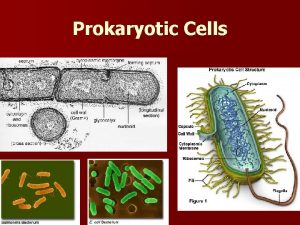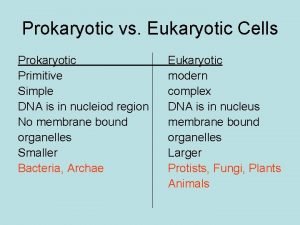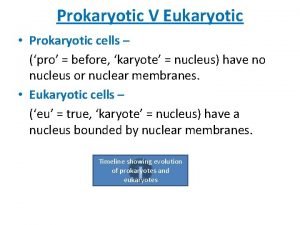CELLS CONTINUED 11817 HOW WE CLASSIFY CELLS PROKARYOTIC









- Slides: 9

CELLS CONTINUED 11/8/17

HOW WE CLASSIFY CELLS! • PROKARYOTIC VS. EUKARYOTIC • UNICELLULAR VS. MULTICELLULAR • PHOTOSYNTHETIC VS. NON-PHOTOSYNTHETIC

PROKARYOTIC VS. EUKARYOTIC Differences • Prokaryotic Cells do NOT have a nucleus. Similarities • Eukaryotic Cells have a nucleus. • Cell Membrane • Prokaryotic Cells are unicellular • Ribosomes • Eukaryotic Cells are multicellular • Cytoplasm • Prokaryotic Cells do not have membrane bound organelles • Eukaryotic Cells have membrane bound organelles • DNA

UNICELLULAR VS. MULTICELLULAR Unicellular Multicellular • All life functions occur in the cell • Specializes in specific functions. • The entire organism consists of one singular cell. • The organism is made of many cells.

PHOTOSYNTHETIC VS. NON-PHOTOSYNTHETIC Photosynthetic • Cells has chloroplast and goes through the process of Photosynthesis Non-Photosynthetic • The cell does not contain chloroplast and can not preform photosynthesis.

BACTERIA CELLS • Unicellular • Prokaryotic • Non-Photosynthetic • DNA in bacteria cells is contained in one circular chromosome in the cytoplasm. • Can be 3 different shapes

PROTISTS CELL • Mostly Unicellular • Eukaryotic • Some are Photosynthetic while others are not • 3 Different kinds of protists • Animal Like • Plant Like • Fungi Like

PLANT CELLS • Multicellular • Eukaryotic • Photosynthetic • Have a large vacuoles • Cell wall to provide structure to the cell • Have chloroplasts to help preform photosynthesis • Rectangular shape

ANIMAL CELLS • Multicellular • Eukaryotic • Non-Photosynthetic • Have smaller vacuoles if any because the do not need the storage • Has a round shape • Does not contain chloroplast





